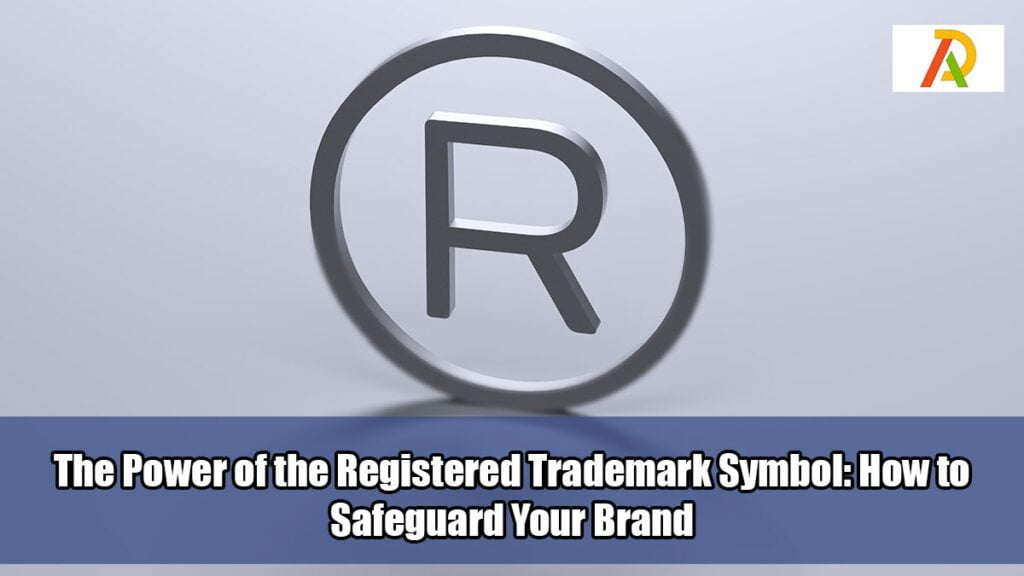The Power of the Registered Trademark Symbol: How to Safeguard Your Brand

In the competitive world of business, safeguarding your brand is more important than ever. One powerful way to protect your brand and establish its ownership is by utilizing the registered trademark symbol. With just a simple “®” at the end of your brand name or logo, you send a clear message to competitors and consumers alike that your brand is unique and legally protected. The registered trademark symbol carries significant weight in the legal realm, as it signifies that your brand has been officially recognized and registered with the appropriate authorities. It serves as a deterrent to potential infringers, preventing them from capitalizing on your brand’s success and reputation. But beyond legal protection, the registered trademark symbol also conveys credibility and professionalism to your target audience. When consumers see the symbol, it instills a sense of trust and confidence in your brand, assuring them that you have taken the necessary steps to secure your intellectual property rights.
In this article, we will delve deeper into the power of the registered trademark symbol and explore how you can leverage it to safeguard your brand effectively. We will discuss essential considerations, best practices, and tips for proper usage. So, let’s dive in and discover how the simple addition of a symbol can make a significant difference in protecting and enhancing your brand’s value.
Why is the Registered Trademark Symbol Important for Your Brand?
- Identity Protection safeguards your brand against unauthorized use, ensuring brand consistency and trustworthiness.
- Exclusivity: It grants the owner exclusive rights, preventing others from using anything confusingly similar.
- Legal Power: It provides solid legal footing in case of disputes.
How to Register a Trademark
- Search for Uniqueness: Ensure your logo, name, or slogan isn’t already trademarked.
- Consult a Legal Professional: They can guide you on the likelihood of your trademark being approved and help with the process.
- Prepare and Submit an Application: This can be done via the local patent and trademark office or online portals.
Steps to Apply for a Trademark
- Select the Category: Determine the correct class under which your product or service falls.
- File the Application: With all the necessary details about your brand.
- Pay the Fees: Set by the respective patent and trademark office.
- Track Respond: Monitor the status and address any issues raised.
- Approval: You can use the ® symbol next to your brand.
Benefits of Registering a Trademark
- Brand Security: Enhances protection from potential infringers.
- Increased Brand Value: Provides an edge in the market, showing that you take your brand seriously.
- Nationwide Protection: Once registered, your rights extend nationally.
How to Properly Use the Registered Trademark Symbol
- Placement: Typically placed at the upper right corner of the trademark.
- Prominence: This should be easily visible but not overshadow the brand name or logo.
Trademark Infringement and How to Protect Your Brand
- Monitor the Market: Keep an eye out for potential infringers.
- Legal Action: Take swift action if you suspect infringement.
- Renew Your Trademark: Ensure you renew your trademark periodically, as required.
Alternatives to the Registered Trademark Symbol
- ™ (Trademark): Represents an unregistered trademark and offers limited protection.
- SM (Service Mark): Used for unregistered service brands, not tangible products.
Common Misconceptions about Trademarks
- “It’s a Patent”: Trademarks protect brands, whereas patents protect inventions.
- “Once Registered, Forever Protected”: Trademarks must be renewed and defended to maintain protection.
Conclusion: The Importance of Protecting Your Brand with the Registered Trademark Symbol
Securing your brand’s identity is paramount in today’s competitive landscape. The registered trademark symbol protects and elevates your brand, ensuring its unique position in the market and preventing potential pitfalls. Your brand is an asset; protect it diligently.


